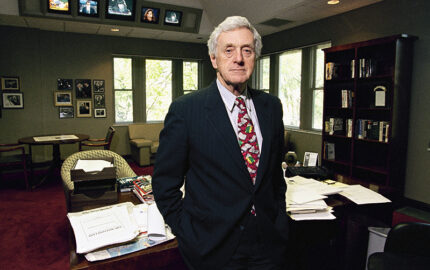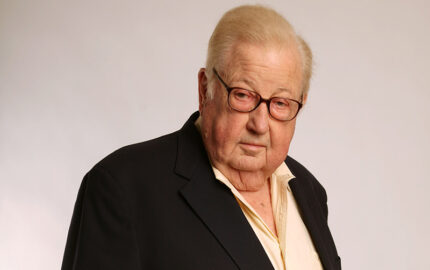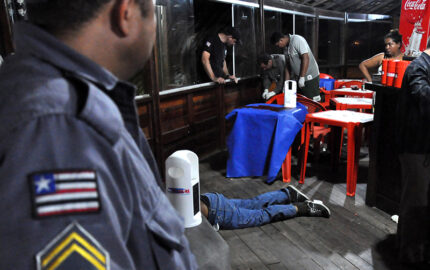
The Energy Beat: Complex and Compelling
To a journalist’s ear, the words “energy” and “crisis” belong together, in part because coverage of energy issues has been fueled largely by episodic coverage of difficulties people confront when sources of energy diminish—such as gasoline price hikes and shortages—or they vanish, as in electricity blackouts. To some degree this approach is changing as better-trained journalists pursue stories about energy and keep watchful eyes on a wider range of critical energy issues. – Melissa Ludtke, Editor
Another issue to emerge from the Iraq War coverage, as noted in recent Congressional testimony by no less than Secretary of Defense Donald Rumsfeld, is the omnipresence of digital photography. Amateur pictures have always found their way into the news stream; some have become icons of photojournalism, such as the photo of the Oklahoma City fireman and baby.
RELATED ARTICLE
"The Unseen Is Made Visible"
- Photo essay of flag-draped coffinsNow, with the advent of cheap digital cameras and the Internet, a dynamic is emerging in which anyone able to shoot an image can distribute it easily to the entire world. The picture of the “cargo of caskets” was transmitted via e-mail to The Seattle Times. Images of the abuse of Iraqi prisoners were more easily brought to public attention because, apparently, the photographs were taken with digital cameras.
This technology makes censorship harder. A photo can be “leaked” with the click of a mouse. But there is an ominous aspect to this issue as well. Digital technology—especially Photoshop-type image manipulation software—makes photo fakery by amateurs and professionals easier as well. Earlier in the Iraq War a Los Angeles Times’s photographer was fired for creating a composite image from two separate pictures. And via the Internet any number of “incredible” news pictures circulate through chain mail messages. But many of these images are simply not credible.
So far, the number of manipulated (or faked) photographs that have been published or broadcast is low—we think! But a muddled future for war photography could lie ahead as editors will have to confront—and make quick decisions about whether to print or air—increasing numbers of amateur-produced images of sensational content but unknown truth.
RELATED ARTICLE
"The Unseen Is Made Visible"
- Photo essay of flag-draped coffinsNow, with the advent of cheap digital cameras and the Internet, a dynamic is emerging in which anyone able to shoot an image can distribute it easily to the entire world. The picture of the “cargo of caskets” was transmitted via e-mail to The Seattle Times. Images of the abuse of Iraqi prisoners were more easily brought to public attention because, apparently, the photographs were taken with digital cameras.
This technology makes censorship harder. A photo can be “leaked” with the click of a mouse. But there is an ominous aspect to this issue as well. Digital technology—especially Photoshop-type image manipulation software—makes photo fakery by amateurs and professionals easier as well. Earlier in the Iraq War a Los Angeles Times’s photographer was fired for creating a composite image from two separate pictures. And via the Internet any number of “incredible” news pictures circulate through chain mail messages. But many of these images are simply not credible.
So far, the number of manipulated (or faked) photographs that have been published or broadcast is low—we think! But a muddled future for war photography could lie ahead as editors will have to confront—and make quick decisions about whether to print or air—increasing numbers of amateur-produced images of sensational content but unknown truth.


